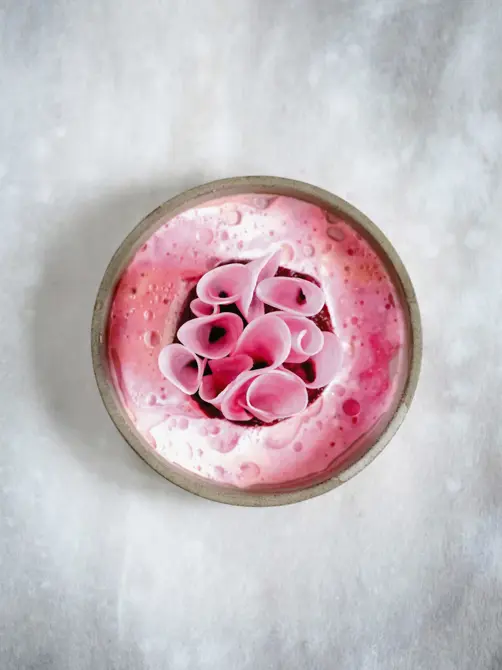CONCENTRICALLY ECCENTRIC
A real revelation. From the outside, it looks very much like an ordinary beetroot. But once cut open, the Chioggia beetroot springs a surprise with its characteristic pattern - hypnotic pink rings. Hailing from the wild beet family, and later sugar beet, this is a traditional original variety that has been cultivated in the small fishing village of Chioggia near Venice since the 16th century.

These days, it is also grown outside of Italy. It is harvested from August. After this, it can then be easily stored until spring, and so can be used to enhance winter cuisine.
Its taste and texture also differ from those of red or yellow beetroot. The Chioggia beetroot has a softer consistency. It has a more complex flavour that combines mild sweetness with a slightly bitter finish, especially when eaten raw – as it really should be. Because its one small flaw is that it loses its beautiful pattern when cooked. To show off the distinctive ring pattern in all its glory and make it look ‘instagrammable’, it’s best to slice this vegetable horizontally, not vertically. But it also unfolds its graceful charms when cut into irregular, small angular pieces.
My favourite dish is a flower of Chioggia beetroot in a sweet and sour beetroot puree. To make this, peel the Chioggia beetroot and slice it very thinly. Cover with water and white balsamic vinegar (or rice vinegar) in a 1:1 ratio and marinate for at least one hour. To serve, put the beetroot puree on a plate with a serving ring. Shape the Chioggia beetroot slices into a funnel and insert the thin end into the puree. Spoon the sauce of buttermilk, oil and white balsamic vinegar around it.
Words & image claudio del principe






